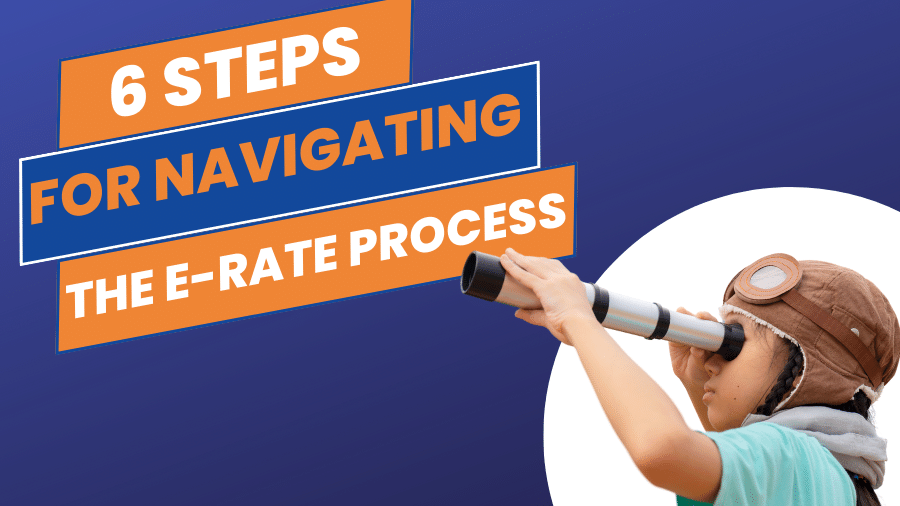From Competitive Bidding to Invoicing
The E-Rate program, established to bridge the digital divide in education, provides funding for eligible schools, libraries, and other institutions to acquire essential telecommunications and internet services. This program operates through a structured application process that encompasses six key steps: Competitive Bidding, Selecting a Service Provider, Applying for Discounts, Application Review, Starting Services, and Invoicing. In this article, we will guide you through this process, demystifying each step for a smooth E-Rate application journey.
Step 1: Competitive Bidding
Before diving into the E-Rate application, educational institutions must initiate the process by posting a Form 470, which is essentially a Request for Services. This form is your call to service providers, inviting them to submit proposals that meet your institution’s needs. This competitive bidding process aims to ensure transparency and fairness in selecting the best service providers while staying within budget.
Step 2: Selecting a Service Provider
Once the Form 470 has been posted for a minimum of 28 days, you’ll evaluate the service provider proposals that have been submitted. Your goal is to choose a provider that aligns with your institution’s requirements. This selection is a critical step, as it impacts the quality and cost-effectiveness of services you’ll receive.
Step 3: Applying for Discounts
With your service provider selected, you’ll move on to completing and submitting Form 471. This is where you officially apply for E-Rate discounts. It’s crucial to ensure that the information you provide in this form is accurate and in line with the services and pricing specified in the Form 470. This step solidifies your commitment to pursuing E-Rate funding.
Step 4: Application Review
The USAC, which administers the E-Rate program, reviews the Form 471 applications for compliance and eligibility. They may seek clarification or additional information during this phase. It’s essential to stay responsive to their inquiries to expedite the process.
Step 5: Starting Services
As you await approval of your Form 471, you should begin preparing for the E-Rate year. Make sure your documentation is organized and up to date. Once your funding commitment is confirmed, you can start receiving the services or equipment you’ve applied for. This step signifies the practical implementation of your E-Rate-supported infrastructure.
Step 6: Invoicing
Service providers submit invoices for the services they’ve provided. You must review and approve these invoices, ensuring they align with the agreed-upon services and prices. The E-Rate program provides options for reimbursement, either through a Service Provider Invoice (SPI) or a Billed Entity Applicant Reimbursement (BEAR) form. The choice of method depends on your institution’s financial structure and preferences.
Conclusion:
The E-Rate application process is a systematic journey toward securing funding for essential educational technology services. Beginning with Competitive Bidding, you set the stage for the whole process, culminating in Invoicing, where you ensure the proper utilization of funds. Each step is integral to achieving your institution’s technology goals while staying within budget.
Summary Comparison Chart:
| Step | Description |
|---|---|
| Competitive Bidding | Initiate the process by posting a Form 470 to request service provider proposals. |
| Selecting a Service Provider | Evaluate proposals and select a service provider aligned with your institution’s needs. |
| Applying for Discounts | Complete and submit Form 471 to officially apply for E-Rate discounts. |
| Application Review | USAC reviews Form 471 applications for compliance and eligibility. |
| Starting Services | Prepare for the E-Rate year and implement services or equipment after funding commitment. |
| Invoicing | Review and approve service provider invoices, ensuring compliance with the agreed-upon services and prices. |
We hope this article has clarified the E-Rate application process, making it more accessible to educational institutions aiming to enhance their technological capabilities. By following these six steps, you can harness E-Rate’s support to bridge the digital divide and bring advanced connectivity to your learning environment.


